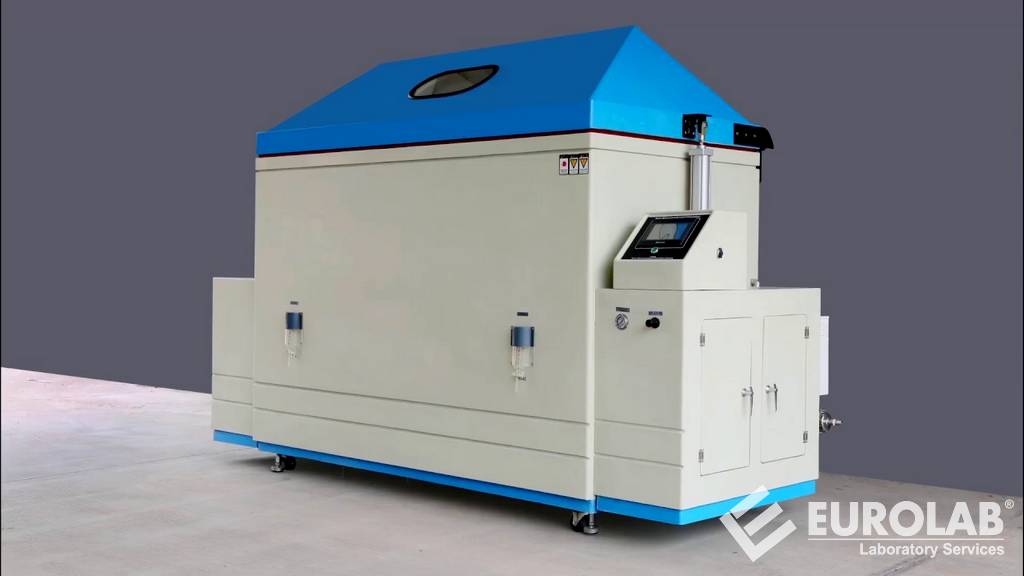

The ASTM G85 standard stands for the Modified Salt Spray (Fog) Test and is a cyclic corrosion test using a solution of sodium chloride and ammonium sulfate that is much more dilute than conventional salt mist (spray). This test is often used to evaluate paints on steel.

The ASTM G85 standard consists of 117 modifications to the ASTM B5 continuous salt spray test. These modifications are referred to as inserts A85 to A1 in ASTM G5 and can be applied to ferrous and non-ferrous metals as well as organic and inorganic coatings. The variations brought by this application are useful when a different or more corrosive environment is desired than the salt mist described in application B117.
The ASTM G85 standard consists of 117 changes to the ASTM B5 Salt Spray Test;
ASTM G85 Appendix A1 Acetic Acid-Salt Spray Test, In this variation of the Continuous Basic Salt Spray Test, a 5% sodium chloride solution is acidified to pH 3,1 to 3,3. by adding acetic acid. The temperature in the fog chamber is maintained at 35°C + 1.1 or -1.7°C (95°F+2 or -3°F).
This test can be as short as 16 hours. But it is usually run for as long as 144 hours, or even 240 hours. At these extended lengths it is very useful for investigating parameters related to electroplating of die cast steel or decorative chrome plating of zinc. It is also used to evaluate the quality of a product.
ASTM G85 Annex A2 Cyclic Acidified Salt Fog Test. For this variant of the Salt Spray Fog Test, a standard 5% sodium chloride solution is acidified to pH 2,8 to 3,0 by adding the appropriate amount of acetic acid. The temperature in the exposure zone is maintained at 49°C +1,1 or -1,7°C (120°F +2 or -3°F).
This test is often performed under so-called 'wet floor' conditions. This prevents the inside of the box from drying out. Dry conditions will reduce the rate of corrosion.
However, the dry dip test is preferred for testing 2000 series aluminum alloys and some paint coatings. The test is run as a series of six hour cycles.
This test uses a sea salt solution instead of the standard sodium chloride. This solution is then acidified using Acetic acid until a pH of 2,8 to 3,0 is maintained.
This test is performed as a wet floor test, meaning there should always be about an inch or more of water to prevent the inside of the box from drying out, which reduces the rate of corrosion.
The temperature remains constant during this test. The temperature at which the test will be applied is determined by the type of material being tested.
This test is particularly useful in the production control of exfoliation resistant heat treatments for 2000, 5000 and 7000 series aluminum alloys.
This test involves a salt spray mist with the addition of Sulfur Dioxide (SO2) gas directly into the salt spray test chamber or cabinet. Salt spray solution is defined by mutual agreement or specifications covering the material or product to be tested.
The temperature in the exposure zone of the salt spray booth or chamber is maintained at 35°C + 1.1 or -1.7°C (95°F + 2 or -3°F).
(SO2) gas should be supplied to the salt spray cabinet in a way that ensures a homogeneous distribution in the room.
These test cycles use 1 hour drying and 1 hour fog. The electrolyte is a solution of sodium chloride and ammonium sulfate and is more dilute than the conventional salt spray fog test. The fog portion of this test is performed at room temperature, but the drying portion is performed at a high temperature. Also, the spray air for this test was not saturated with water.
The electrolyte solution consists of 0.05% sodium chloride and 0.35% ammonium sulfate by mass. Sodium chloride and water are subject to the same purity requirements as the other test in this specification. Ammonium sulfate shall not contain more than 0.3% of the total impurity. To get the full specs, go to ASTM International.
During the drying phase the temperature throughout the exposure zone will reach and remain constant at 3°C plus or minus 4 35°C (6°F plus or minus 1.5°F) within 95/3 hours of transition from fog.
To get an appointment, to get more detailed information or to request an evaluation, you can ask us to fill in our form and reach you.